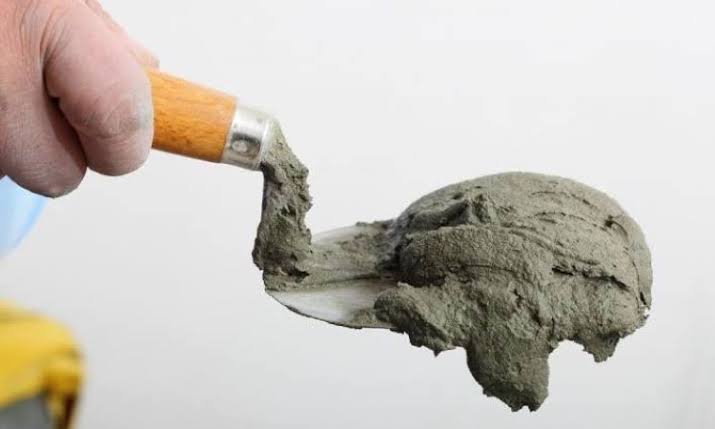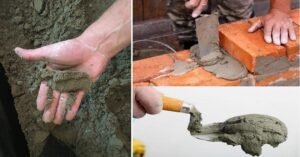In masonry construction, it is a substance used to fill the spaces between the layers of bricks and blocks.
It is a mixture of Sand, a binder like cement or lime, and water are the main ingredients of mortar, which is applied as a paste and then hardens.
Following is a list of some of the features that the addition of sand material gives the mortar mix
- Bulk
- Setting
- Shrinkage
- Strength
Types Of Mortar
Type N
For above-grade structures and internal walls that bear loads, a Type N mix is advised.
It is a moderately strong mixture that can survive extreme heat, cold, and weather.
It is the mixture of choice for homes and everyday use because it is thought of as an all-around mix.
It is constructed of a mixture of six parts sand, one part lime, and one part Portland cement.
Type O
Type O mix is primarily used in non-load-bearing construction projects due to its weak physical properties.
Because of its flexibility, it can be used with sandstone and other materials with low strength in compression to rebuild them.
Because lower-strength mixtures offer superior bonding and sealing capabilities, they are not inferior to high-strength mortars.
One component of Portland cement, two parts lime that has been hydrated, and nine parts sand are used to create a Type O mixture.
Type S
For external walls below grade, Type S can be used because it is a medium-strength mortar that is more effective than Type N.
It has been created to operate in settings where a material for construction comes into contact with the ground.
Nine parts sand, one part hydrated lime, and two parts Portland cement.
Type M
The strongest mix available is Type M, which should only be used when significant compressive force is required.
It is applied in below-grade applications where there is a high likelihood of lateral roadways or excessive pressure.
It works best when used in foundations and retaining walls alongside stone.
Three parts Portland cement, one part hydrated lime, and twelve parts sand are used to create this mixture.
Here are some guidelines you may use to help you make the right choice when selecting a mortar because it affects both safety and quality
Keep in mind potential interactions between other materials
In order for your building materials to flow normally together without cracking, your selection of mortar may be almost as strong as those materials.
Analyse if pressure from the peak or the sides may be applied to your project to decide what type of mortar you require.
Choose a high compressive strength type of mixture for building construction projects that will bear a lot of weight, such as load-bearing walls.
A high-flexural-force mortar is useful for projects that are subject to side pressure, such as retaining walls.
Consider potential applications
When deciding which sort of mortar to use for your project, keep in mind that it can either be strictly practical or serve as a decorative element.
For instance, if you’re constructing a brick wall, you can decide to use type N mixture to customize the color because it can serve both functional and decorative purposes.
Consider your mortar’s longevity before evaluating its appearance on a project because, for the majority of projects, safety comes before style.
Identify any exposure risks
Different kinds of mortar react differently to being around other elements.
Decide what weather conditions, such as wind, rain, and extreme heat, may have an impact on your project before selecting.
Some lesser varieties of mortar may lose some of their strength when exposed to the environment, so be sure to read the specifications and evaluate them against the demands of your project before making your decision.





